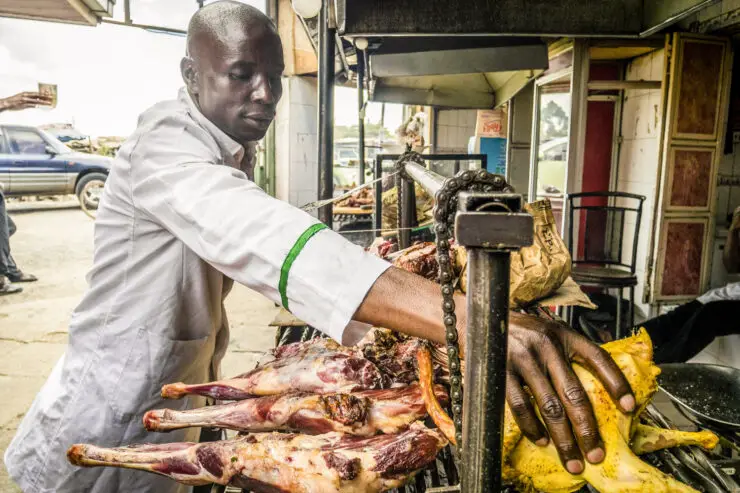As an Amazon Associate I earn from qualifying purchases. Please read the disclaimer for more info.
Kenyan food is perfect for adventurous travelers interested in exotic flavors. Kenyan cuisine has something tantalizing for everyone’s palate, from flavorful stews, curries, and grilled foods like nyama choma to Kenyan rice dishes and hearty vegetable dishes.
With a variety of spices and ingredients used across different regions of Kenya that create unique flavor combinations, there’s an endless array of tasty options available when it comes to enjoying authentic Kenyan food.
With its unique flavor profiles, a journey into this largely unknown cuisine awaits you in East Africa.
Here we look at 28 Kenyan food dishes that are a must-try for any traveler looking to experience the best of what the country offers.
- Ugali
- Kuku Kienyeji
- Nyama Choma – Grilled Meat – Pride of Kenyan Food
- African Cookbook Review
- Pilau
- Chapati
- Samosa
- Sukuma Wiki
- Irio
- Githeri
- Mukimo
- Kenyan Bhajias
- Matoke
- Kenyan Beef Stew
- Wali wa Nazi
- Wali wa Kukaanga
- Kuku Paka
- Kachumbari
- Mandazi
- Mutura
- Mahindi Choma
- Chipsi Mayai
- Maharagwe
- Samaki Wa Kukaanga
- Ingoho
- Mishkaki
- Kenyan Chai
- Maziwa Mala
- Masala Chai
In Bibi’s Kitchen: The Recipes and Stories of Grandmothers from the Eight African Countries that Touch the Indian Ocean is a heart-warming exploration of gastronomy on the African continent. Curated by Hawa Hassan, with forewords by Yewande Komolafe and recipes by 30 grandmothers across Zanzibar, Kenya, Somalia, Tanzania, Mozambique, Madagascar, Comoros Islands, and South Africa who are passionate about their culinary heritage. This cookbook takes readers on an immersive journey through unique tastes and textures. Each dish is accompanied by beautiful artworks depicting lands shaped by local culture, politics, literature and geography. These dishes are especially delicious as they come together with stories from the grandmothers themselves. From comforting kamwaki to kikonyogo beans cooked over charcoal to ugali served with lungu sauce – this collection will open up a world of flavors for every palate!
Ugali
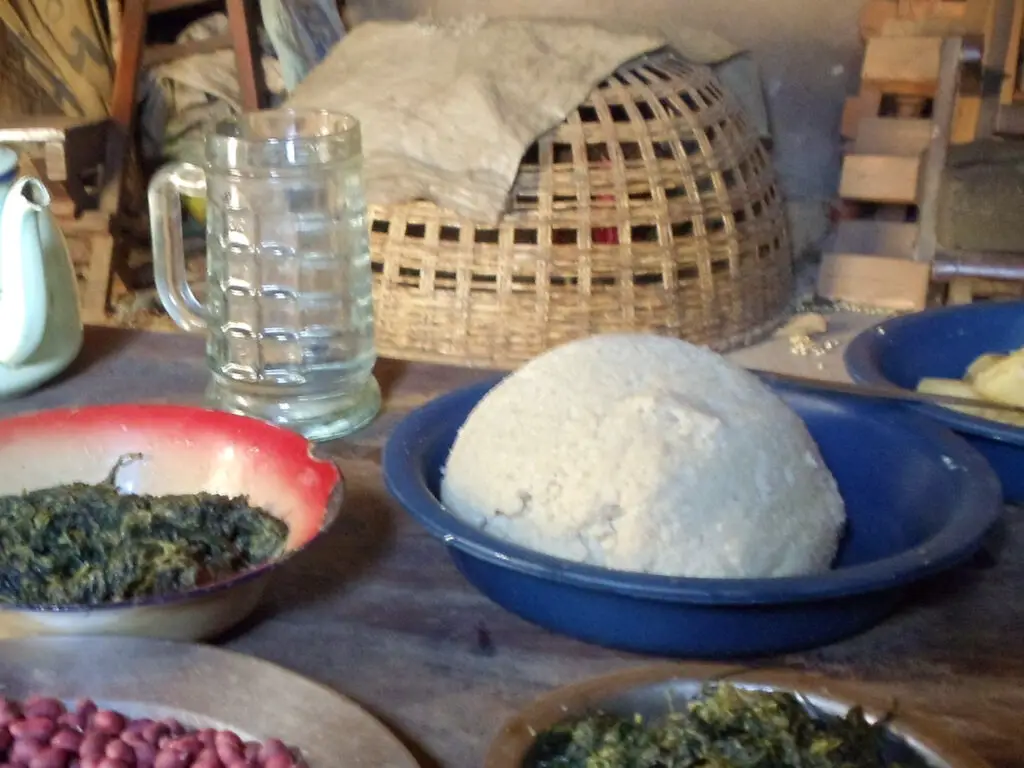
Ugali is a staple dish throughout many African nations, considered to be the national dish of Kenya and Tanzania. It is made from maize flour mixed with boiling water and then cooled until it obtains a dough-like consistency.
Generally, it functions as a side dish, though it may also be eaten on its own, and is served as a thick flatbread or “pancake”. Usually accompanied by sauce or bean stew, Ugali is widely beloved in Kenya for its delicious taste and ease of preparation.
Ugali made using traditional methods is famously light and fluffy on the inside with slightly crispier edges, which can be achieved by cooking for an extended period over low heat.
Ultimately, Ugali provides an easy-to-make yet nutritious meal that has been sustaining families across Africa for centuries.
Kuku Kienyeji
Kuku Kienyeji is a dish that is made of chicken, vegetables, and spices. It is a traditional Kenyan meal that has been passed down through the generations. Whereas chicken is usually considered to be the main ingredient, this dish also packs quite a nutritional punch with ingredients like carrots, green pepper, and onions.
As soon as these locally-sourced fresh ingredients are chopped and ready to cook, they are then combined in a single pot with several spices, such as cumin and garlic powder for extra flavor.
Nyama Choma – Grilled Meat – Pride of Kenyan Food
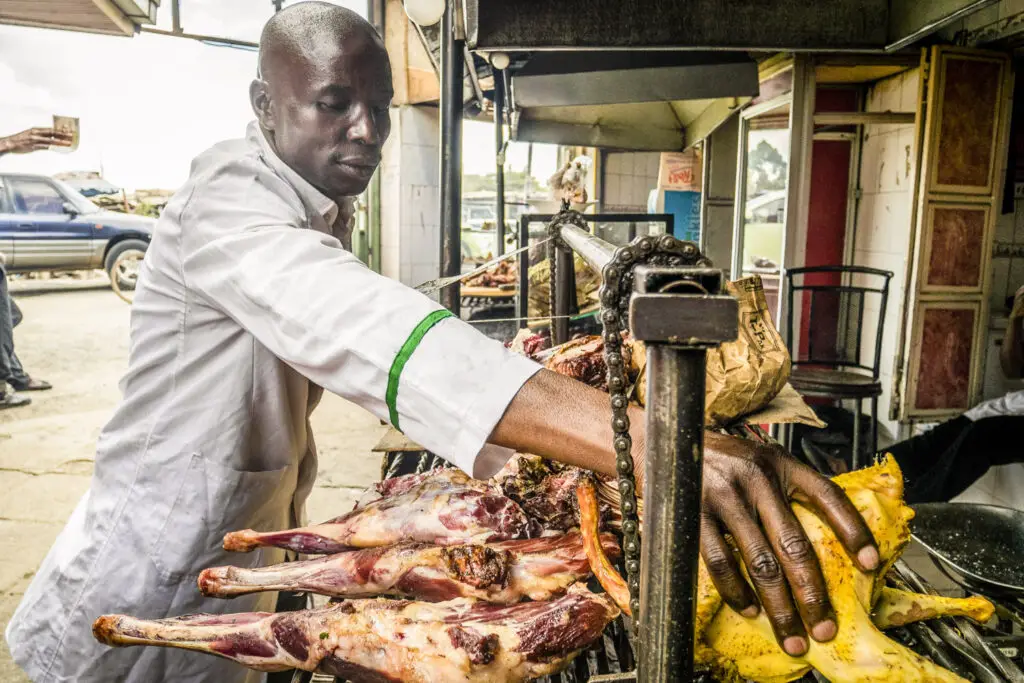
Nyama Choma, or grilled meat, has been a staple food in various parts of the African continent for centuries. Different traditions call for recipes that vary widely – some include marinating the meat in sweet sauces, while others prefer to leave it unseasoned.
Nyama Choma is a popular Kenyan dish usually made from grilled goat, beef, or other meats.
A traditional cooking technique, “subiri kienyeji” – which means “to char thoroughly” – is used to slow roast spiced meats over an open flame. This enhances the flavor and tenderizes the meat.
Nyama choma is commonly served with ugali (a maize-based dish), cabbage salad, and/or “saka saka” leaves. It is also sometimes served with a variety of condiments such as kachumbari (fresh tomato and onion salsa) or “omaniya mlendes”, a sauce made of lemons, tomatoes, onions, and oil. The authentic flavors of Nyama choma make it an excellent addition to any Kenyan food experience.
It’s an incredibly versatile dish – depending on where you go in Africa, you can try different variations such as beef, goat, chicken, or camel meat!
African Cookbook Review

In Bibi’s Kitchen: The Recipes and Stories of Grandmothers from the Eight African Countries that Touch the Indian Ocean
In Bibi’s Kitchen: The Recipes and Stories of Grandmothers from the Eight African Countries that Touch the Indian Ocean is a heart-warming exploration of gastronomy on the African continent. Curated by Hawa Hassan, with forewords by Yewande Komolafe and recipes by 30 grandmothers across Zanzibar, Kenya, Somalia, Tanzania, Mozambique, Madagascar, Comoros Islands, and South Africa who are passionate about their culinary heritage. This cookbook takes readers on an immersive journey through unique tastes and textures. Each dish is accompanied by beautiful artworks depicting lands shaped by local culture, politics, literature and geography. These dishes are especially delicious as they come together with stories from the grandmothers themselves. From comforting kamwaki to kikonyogo beans cooked over charcoal to ugali served with lungu sauce – this collection will open up a world of flavors for every palate!
Pilau
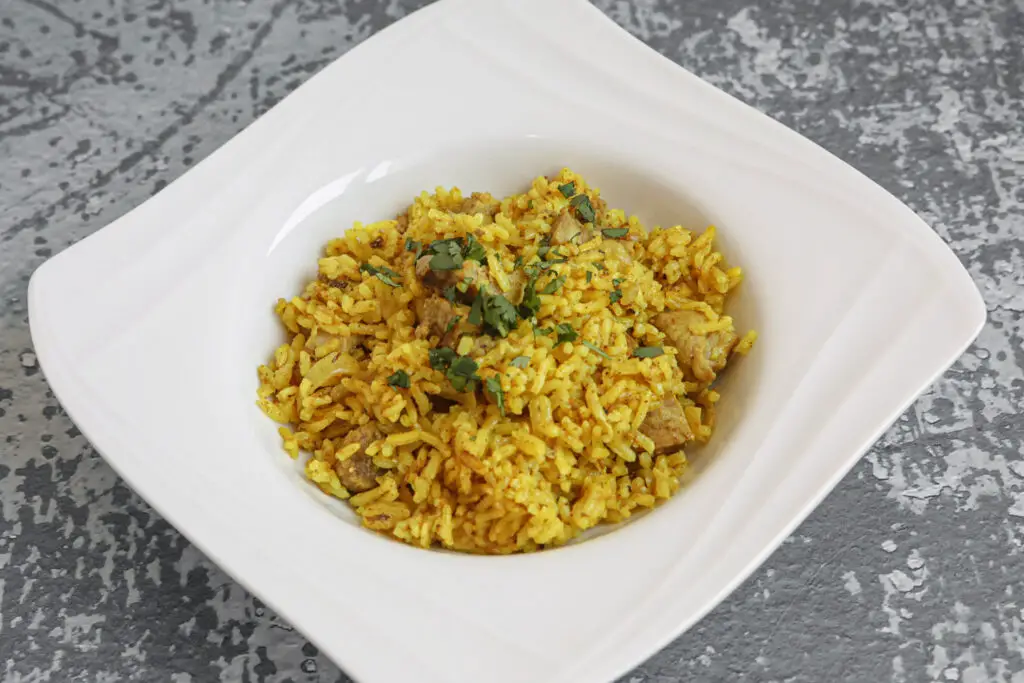
Kenya shows strong evidence of Indian influence, which is especially evident in its cuisine. “Kenyan Pilau” is a prime example: a flavorful dish made with various spices and rice that originates from India.
Kenyan Pilau includes all kinds of flavors, such as garlic, cardamom, cinnamon, chili peppers and cumin, to give it a distinctly African feel.
The locals have embraced this “fusion food” type and adapted it with local ingredients. It is often served with chicken or beef.
Chapati
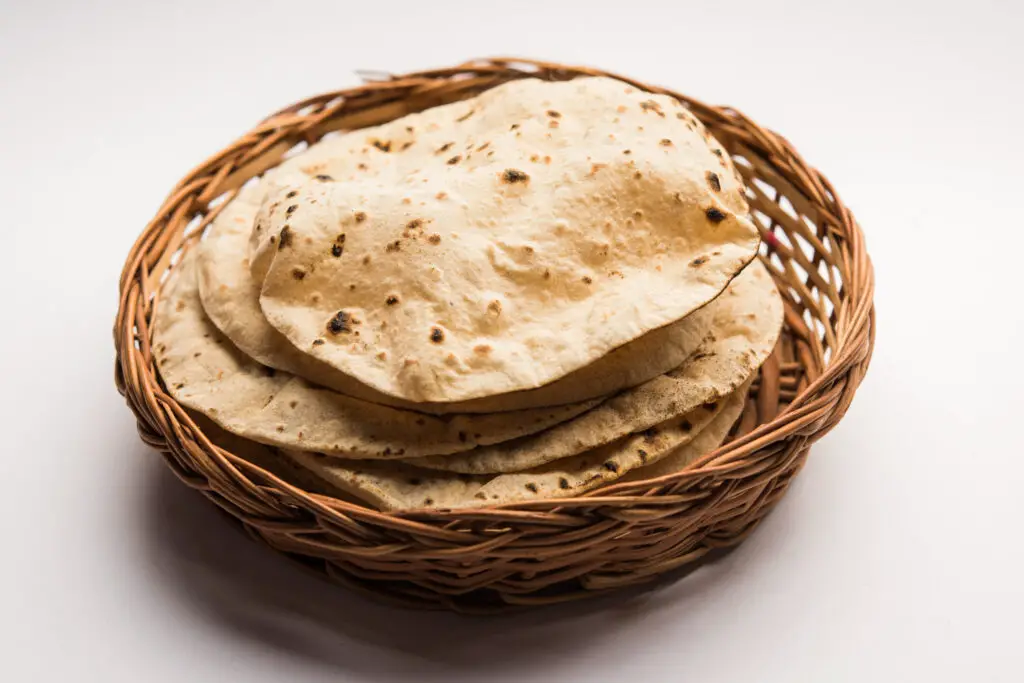
Chapati is a traditional flatbread made from wheat flour and water that has become popular across Kenya.
This popular dish can be served as a light snack or with a delicious curry for lunch or dinner. It can also be used to scoop up different sauces. Chapati can be prepared in many ways, such as fried, roasted, or even baked, and come in various sizes depending on how large you’d like it to be.
Whether enjoyed as part of a meal or eaten alone, chapati is an enjoyable addition to any Kenyan cuisine and one you’ll find on your travels through Kenya.
Samosa
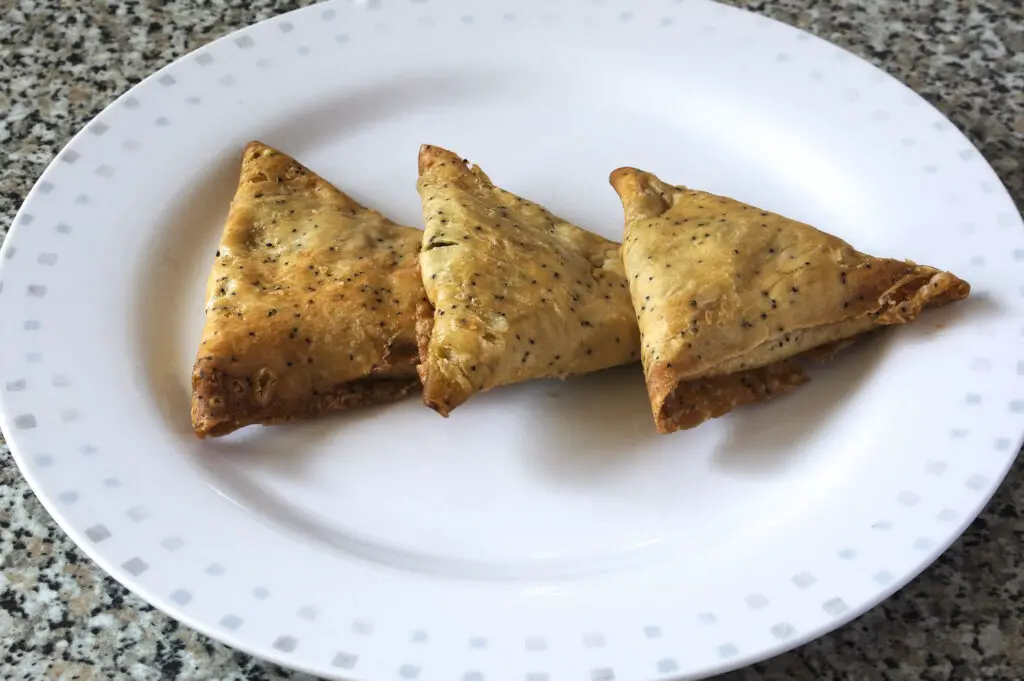
Kenyan samosa is a well-known dish in East Africa. This is another Kenyan food that has its traditions from India.
The triangular-shaped “samosas” are made with dough that is filled with vegetables such as potatoes and onions or with ground beef or chicken, depending on preference.
The flaky and savory snack-type food can often be served up at street-side stands and featured on menus at sit-down restaurants.
Kenyan people have added their own flavorful twist to this beloved Indian-born dish, making it distinctly Kenyan and giving it a unique place in local cuisine.
Sukuma Wiki
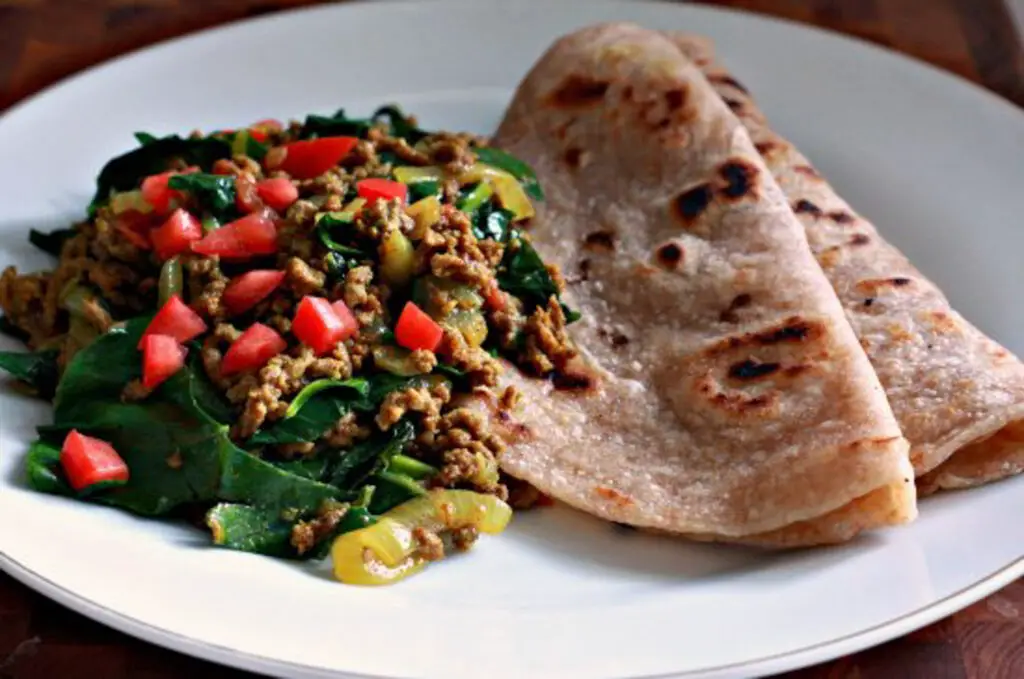
Originally from Kenya, sukuma wiki is a traditional African dish made from kale, tomatoes, and spices. The name of the dish comes from the Swahili phrase ‘Sukuma wiki’, meaning ‘push the week’, as it was traditionally used to stretch small amounts of food over several days.
One of the popular Kenyan dishes, sukuma wiki, can be enjoyed in a variety of ways – some prefer to eat it with ugali, while others enjoy it on its own or with fried side dishes.
It is often cooked with grilled onions for more flavor and served with chili paste for added spice. Sukuma wiki is a truly classic Kenyan cuisine, sukuma wiki is flavorful yet simple.
Irio
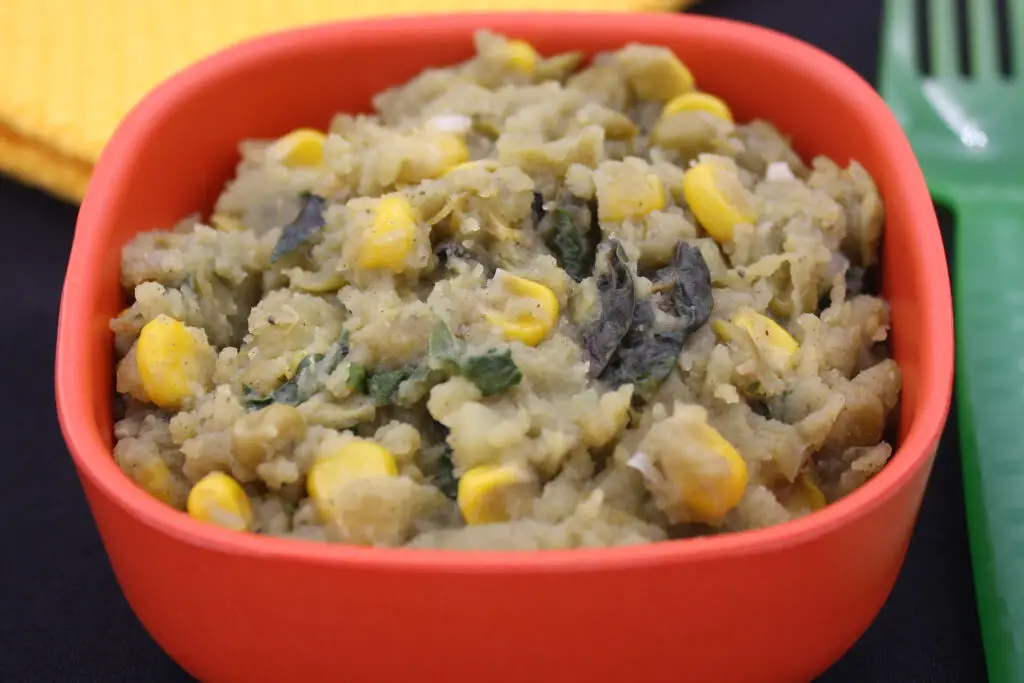
Central Kenya is home to the beloved dish, Irio. This hearty dish is a great side item made with mashed potatoes and corn and can be served alongside any meal.
This distinct combination of mashed potatoes and corn, and sometimes peas and spinach, mixed together provides an amazing flavor profile that cannot be found elsewhere.
With spices like cumin and turmeric added, as well as butter or oil for a rich texture, Irio has become a go-to accompaniment to various dishes, such as nyama choma, all over Kenya.
Githeri
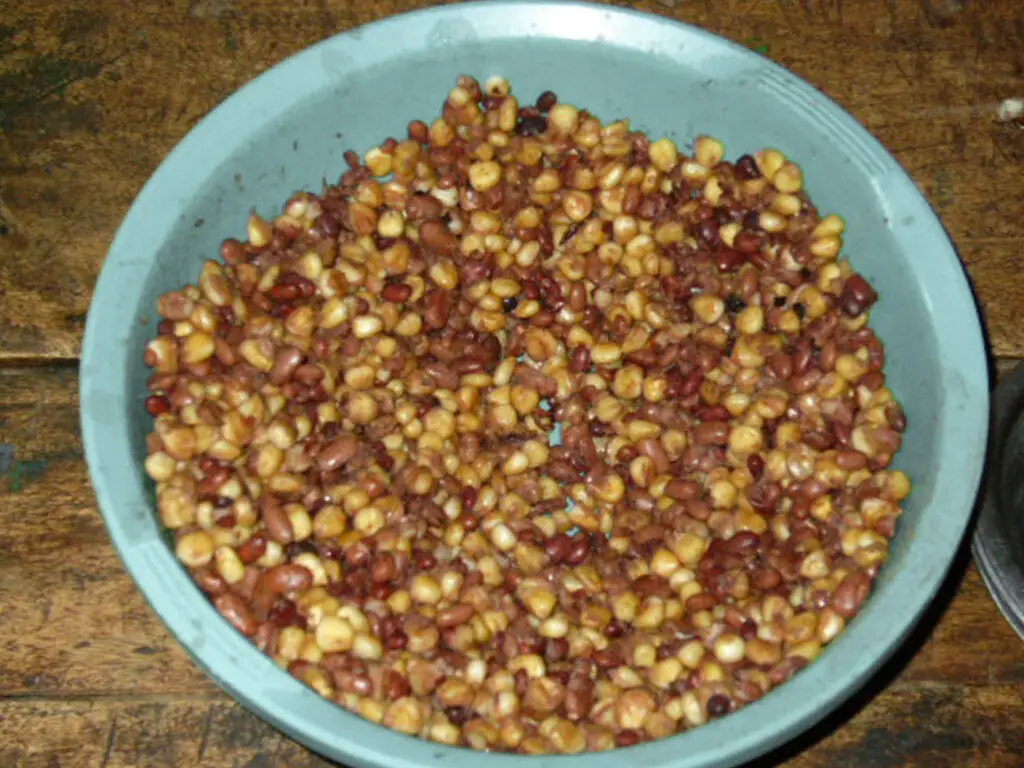
Githeri is a traditional Kenyan dish composed of maize and legumes cooked together. It is widely enjoyed throughout the country and is an especially popular street food in urban areas.
Githeri is considered quite nutritious due to its high protein, sugar, and mineral content derived from beans and maize – making it an ideal meal for people looking for a filling and healthy option.
Furthermore, this dish has become more accessible in recent years, with supermarkets carrying ready-made platters of this delicious food on their shelves.
Thus, this Kenyan food staple has quickly become a favorite among locals and those abroad who have had the chance to try it!
Mukimo
Mukimo is a traditional Kenyan food that has been handed down through generations and is often made for special occasions and holiday celebrations.
The main ingredient in Mukimo is white maize, which is stirred with mashed potatoes and vegetables such as pumpkin leaves, cowpeas, spinach, or kale.
The mix may also include some legumes or other vegetables that give the dish a dramatic burst of flavor. Once cooked, it becomes creamy and buttery, with a hint of herbs like coriander leaves or peppermint adding an extra zing to the mix.
Mukimo doesn’t require too many ingredients or complex cooking methods—the success lies in skillfully preparing the ingredients before cooking them together.
Kenyan Bhajias
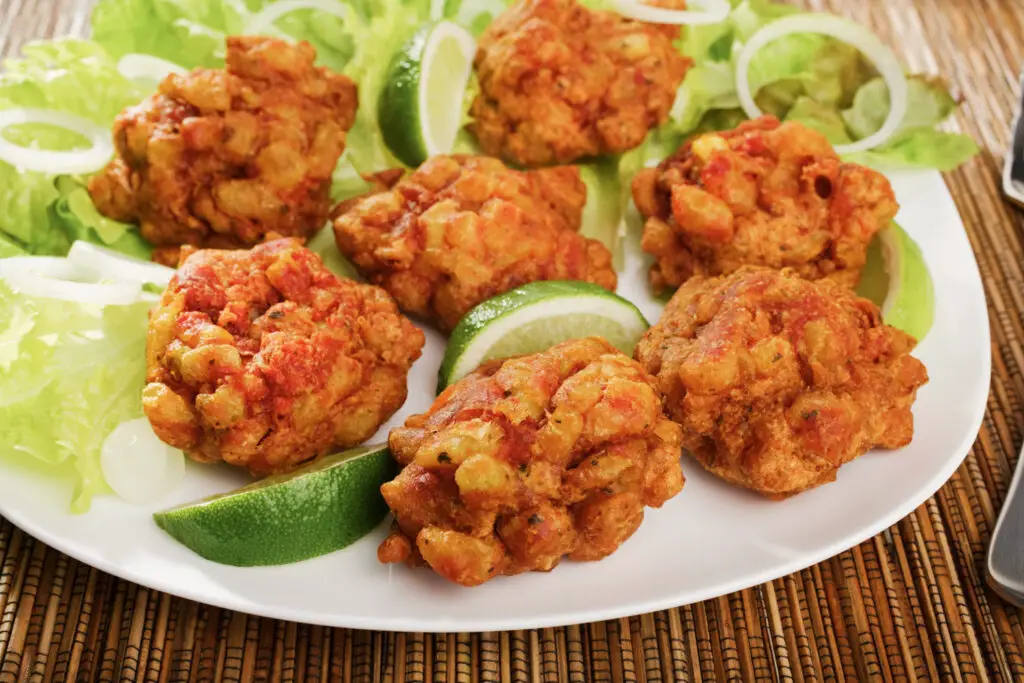
Bhajias are a popular deep-fried snack found in Kenya. They are made by dipping vegetables, such as potatoes, onions, cabbage, or sometimes even spinach, into a batter made from chickpea flour and then frying them until crispy.
Bhajias are spiced with a combination of traditional East African spices to give them a unique flavor. These little bites of heaven can be eaten alone but are traditionally served as an appetizer accompanied by kachumbari, a Kenya salad typically made with tomatoes and onion. A real treat!
Matoke
Matoke, sometimes referred to as “green bananas,” is a native Kenyan food and is a staple in the Kenyan diet. Matoke can be cooked and eaten in a variety of ways.
It is often boiled or steamed until soft, mashed, and served with sauces made from onions, tomatoes, or peanut butter.
Often times it is baked with spices such as cumin, garam masala, or chili powder to create a dish with a deep flavor profile. This delicious food can also be blended into soups or stews that incorporate other hearty vegetables or proteins, or served with roasted meat.
Kenyan Beef Stew
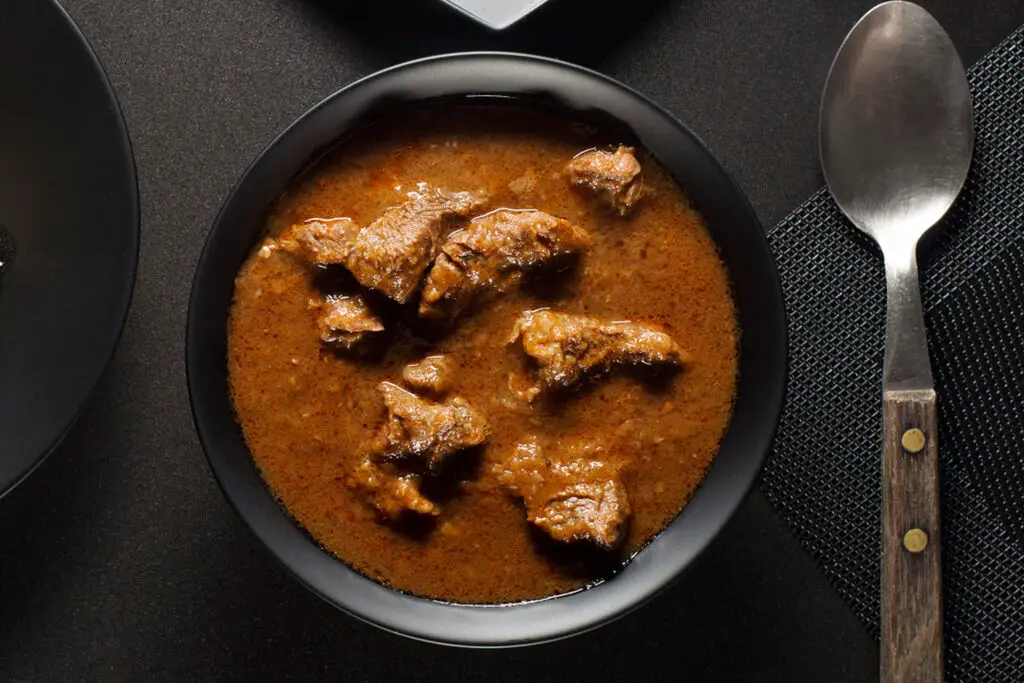
Kenya is home to a wide variety of dishes, including the beloved Kenya Beef Stew.
This hearty, flavorful stew is made with beef and a mix of vegetables such as carrots, onions, potatoes, and bell peppers.
Plus, it includes Kenyan spices such as cardamom and curry powder, giving the dish a unique flavor. While cooking Kenya Beef Stew can take some time, it is worth it due to its delicious taste.
Kenya Beef Stew is an important part of the Kenyan food culture, perfect for feeding family and friends during gatherings or special occasions.
Wali wa Nazi
A native Kenyan food, Wali wa Nazi, is another one of the popular Kenyan dishes found throughout the country and beyond.
This spicy rice and coconut dish is made with millet, red chili pepper, cumin, cardamom, garlic, onion, and coconut milk, forming a delectable balance of flavors.
The Wali wa Nazi name comes from the Mashariki term for spices which are toasted in oil before the base ingredients are added.
The dish is served steamed or boiled and commonly paired with Kenyan stew or grilled meats, such as Nyama Choma.
Wali wa Kukaanga
For fans of Kenyan food, Wali wa kukaanga is a must-have. A traditional dish made with rice, smoked fish, and vegetables, the dish has origins tracing back to the coastal city of Mombasa.
The rice is the base for the dish and is cooked with coconut milk for a delicious flavor and creamy texture. Spices such as cumin and black pepper are commonly added to give it an inviting aroma.
Smoked mackerel is then added to give it savory flavors while fresh slices of tomatoes, onions, and scallions provide a contrast in color and taste.
With all its components combined together in one bowl, Wali wa kukaanga makes for a great meal that truly reflects Kenyan cuisine.
Kuku Paka
Kuku Paka, a Kenyan staple, is a coconut curry with various vegetables, boiled eggs, and either chicken or fish.
As its origins suggest, it boasts bold flavors and spices that truly delight the senses. This traditional East African dish can be flavored in different ways, including aromatic cumin seeds and coriander leaves, depending on individual taste!
But one thing’s for sure; whether served as a family dinner or enjoyed as part of Kenya’s food culture – Kuku Paka is sure to be enjoyed by all!
Kachumbari
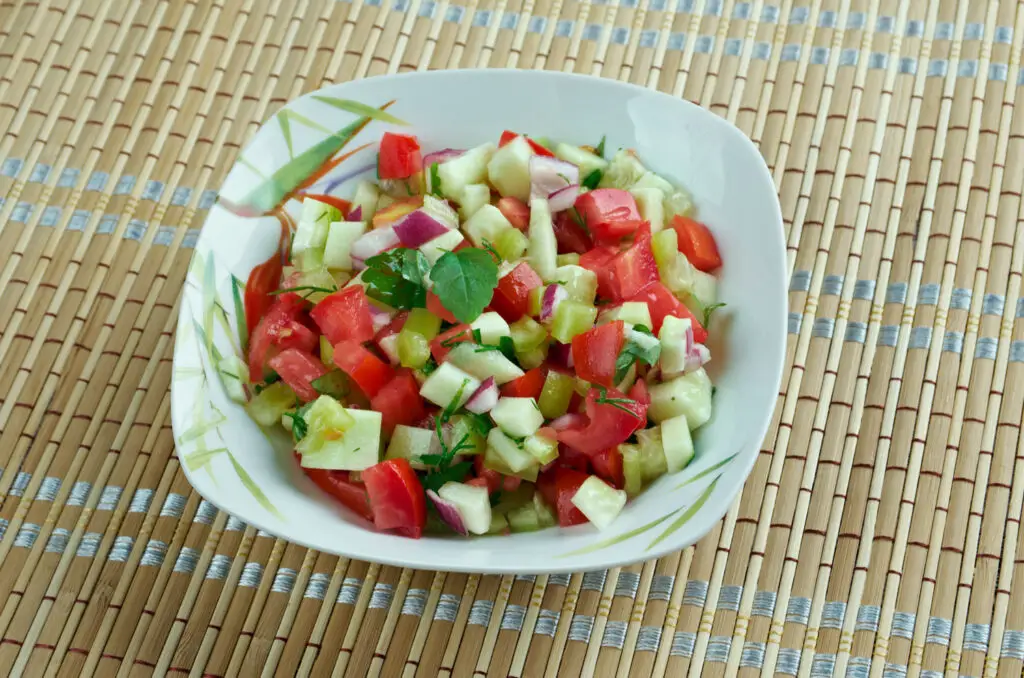
Kachumbari is a widely popular and distinct dish in Kenya. It is a delicious mix of blended tomatoes, onions, peppers, and herbs.
The primary ingredients that make this dish an extraordinary delight are the tangy tomatoes that give a zesty flavor, the crunchy freshness of the peppers, and the sharp bite of finely chopped onions, a squeeze of lemon juice or lime juice, and herbs.
This one-of-a-kind combination creates an incredible flavor that Kenya loves to enjoy. Kachumbari is usually served as either a condiment or a salad depending on preference, and pairs perfectly with nyama choma.
Mandazi

Mandazi is a traditional dish that is eaten and enjoyed in Swahili-speaking regions in Kenya and Tanzania. It is a type of fried dumpling, or Kenyan doughnut, and is usually made using flour, sugar, yeast, eggs, and coconut milk.
The dough is then cut into triangles or rounds and deep-fried in oil until golden and puffy.
Mandazi can be served on its own or eaten with chicken curry or spicy coffee. Many Kenyans enjoy mandazi as a breakfast food, but it can also be eaten at any other time of the day.
Many variations of the traditional recipe include different spices and fruits added to the dough to give it more flavor.
Mutura
Mutura is another of the Kenyan foods enjoyed throughout the country. It is a staple in Kenya’s culinary culture and can be made from either beef, pork, or goat intestines filled with spices, fat, and seasonings.
The casings are then joined together and grilled over open, smoky coals for a mouthwatering smoky taste.
The result is a juicy Kenyan sausage of aroma and flavor.
Mahindi Choma
Mahindi choma is another popular and simple food in this east African country.
It is a meal of grilled corn on the cob that is seasoned with chili and garlic powder. This mouthwatering delicacy is found in most parts of Kenya, whether it’s cooked at an outdoor market by a Kenyan street vendor or in the home kitchen.
Mahindi choma combines sweetness and spice and can be served as a side dish or an appetizer.
In Kenya, Mahindi choma brings friends and family together as they all gather around the grill, roasting the corn to perfection.
Chipsi Mayai
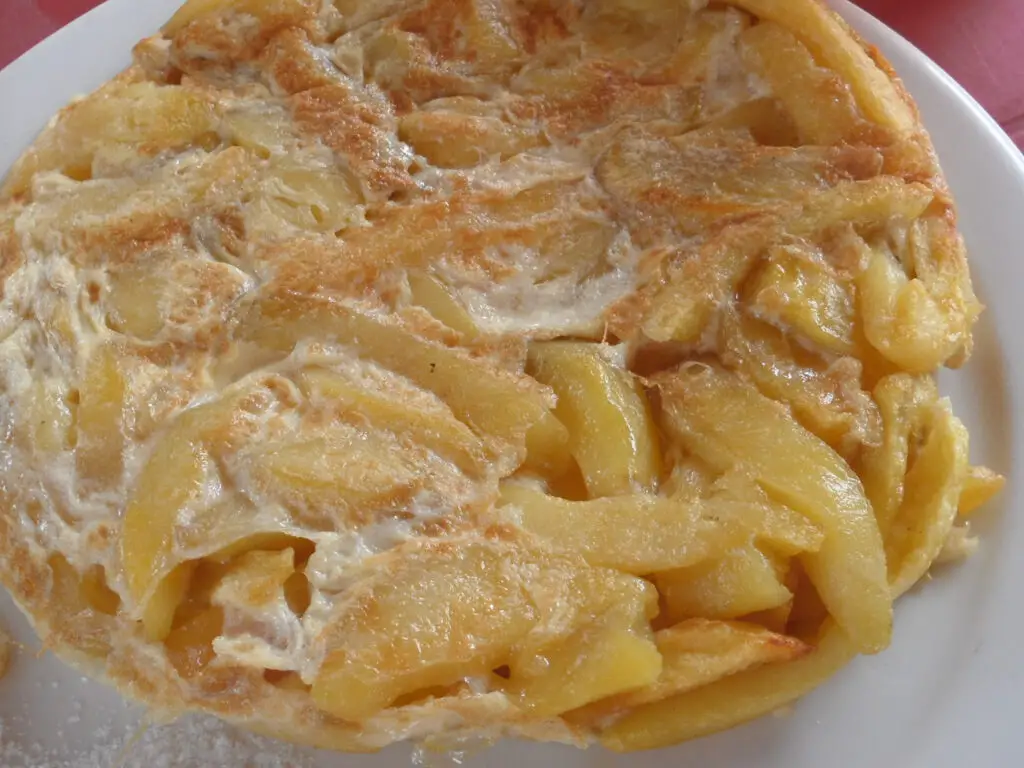
Chipsi Mayai is a Kenya-born dish that continues to remain popular throughout the country. It’s an egg dish consisting of eggs and french fries cooked together in a pan. It can be served as a snack or even with other dishes.
The chips used are typically french fries cut into thin strips. Once the ingredients have been added to the pan, they are left to fry until the eggs form a delicious omelette – infused with potatoes for that special touch of Kenya flavor.
This dish is satisfying, easy to prepare, and usually served with kachumbari and tomato sauce, making it a popular choice for those looking for hearty meals on the fly!
Maharagwe
Maharagwe is a Kenya-based dish composed of beans cooked in a light curry sauce with onions and tomatoes. This simple yet delicious dish is incredibly versatile, as it can act as a main course for vegans and vegetarians or be served as a side to roast chicken or other meats. It’s often garnished with coconut flakes for added texture and flavor without any added sugar. Although its ingredients are relatively inexpensive, the combination of flavors creates a robust and satisfying meal. The best way to fully experience the taste of this wonderful Kenya-native dish is to make it yourself, but luckily it takes no time at all!
Samaki Wa Kukaanga
Samaki Wa Kukaanga is a traditional fish dish originating from Kenya. It’s prepared with a unique blend of spices, herbs, and vegetables to create an explosion of flavor.
In Swahili, Samaki Wa Kukaanga means fried fish, and this dish will use local fish such as fried tilapia or barracuda, usually coated in different types of curry powder and garlic for added flavor.
Popular accompaniments for Samaki Wa Kukaanga include ugali (maize meal paste), kachumbari (a Kenyan-style salsa), or sukuma wiki.
Ingoho
Ingoho is a popular Kenyan dish, typically served as part of a traditional feast. It consists mainly of chicken, traditionally boiled in a stewing pot with herbs and spices to flavor.
The ingredients of this flavorful dish include garlic, ginger, curry powder, green chilies, onions, and tomato paste.
This combination of ingredients provides the perfect balance of succulent poultry with aromatic herbs and spices, giving it an unmistakably Kenya flair.
Mishkaki
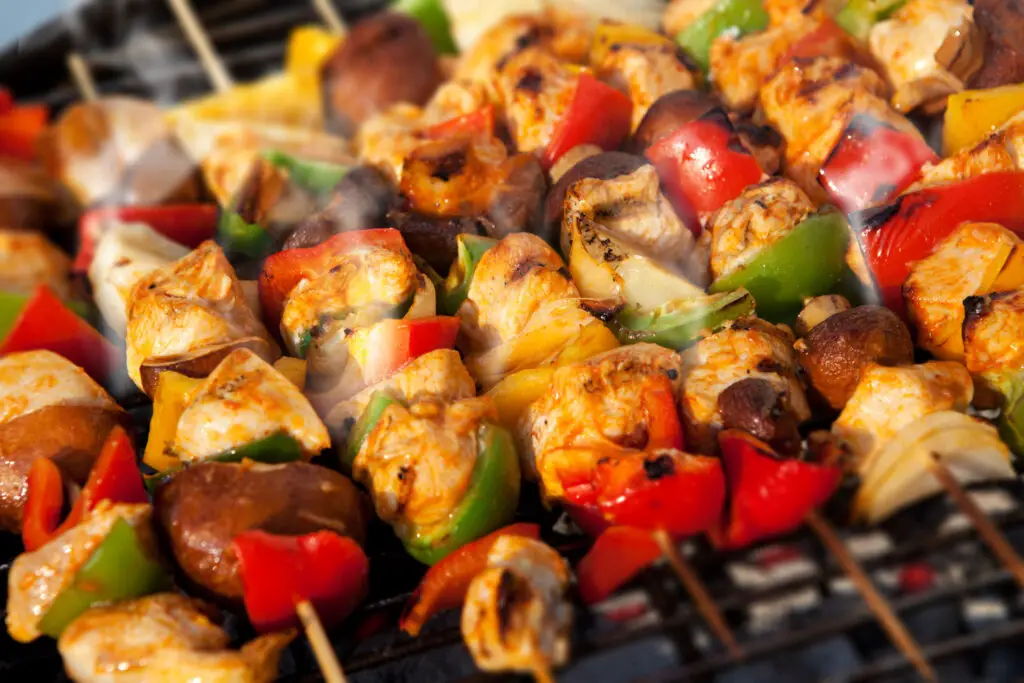
Mishkaki is a beloved dish originating in Kenya. Mishkaki is made with cubes of marinated meat or fish and grilled over charcoal, a bold, smoky addition to the Kenyan culinary repertoire.
Often served as street food, one of Kenya’s favorite snacks can also be found at family gatherings and special occasions.
Mishkaki is typically served with ugali, rice, or french fries.
To enjoy the flavors of Kenya and East Africa, there’s nothing like sitting down to a platter of steaming hot mishkaki fried to perfection and served with chutney on a busy city street!
Kenyan Chai
Kenyan tea is a sweet, milky beverage steeped in tradition and culture. With roots tracing back to the Indian subcontinent, this beloved drink has become an integral part of Kenyan life – enjoyed during breakfast or unwinding after dinner each day.
A cup of classic Kenyan chai requires boiling two parts water with one part milk, then adding the desired amount of sugar for sweetness before adjusting ‘heaviness’ by adjusting the ratio between water and tea leaves; those who prefer heavier brew should increase proportionate amounts of milk while lessening that from water accordingly!
Maziwa Mala
Maziwa mala, a Kenyan delicacy, is a refreshing drink made from sorghum grains and milk. The traditional Kenyan recipe combines both ingredients with a few other components, such as water, sugar, and sometimes cardamom.
This mixture is slowly heated and stirred until the texture turns thick and creamy.
It is enjoyed for its unique balance of tartness, richness, and sweetness. Maziwa mala is traditionally served less cold than Western-style milk drinks, giving it a unique taste for the visitor.
Masala Chai
Kenyan masala chai is an incredibly popular drink, beloved among Kenyan citizens and visitors alike. It combines Kenyan-grown black tea with ginger and spices typical of Indian life – certainly, it has been influenced by the many Indian immigrants of Kenyan history.
Summary of Kenyan Food
Although Kenyan cuisine is diverse, with many different dishes to choose from, these are just a few staples that you need to try on your next trip to Kenya.
If you enjoyed this post you may wish to read:

